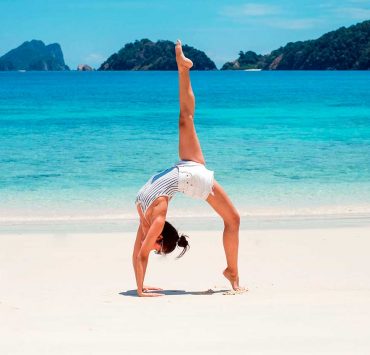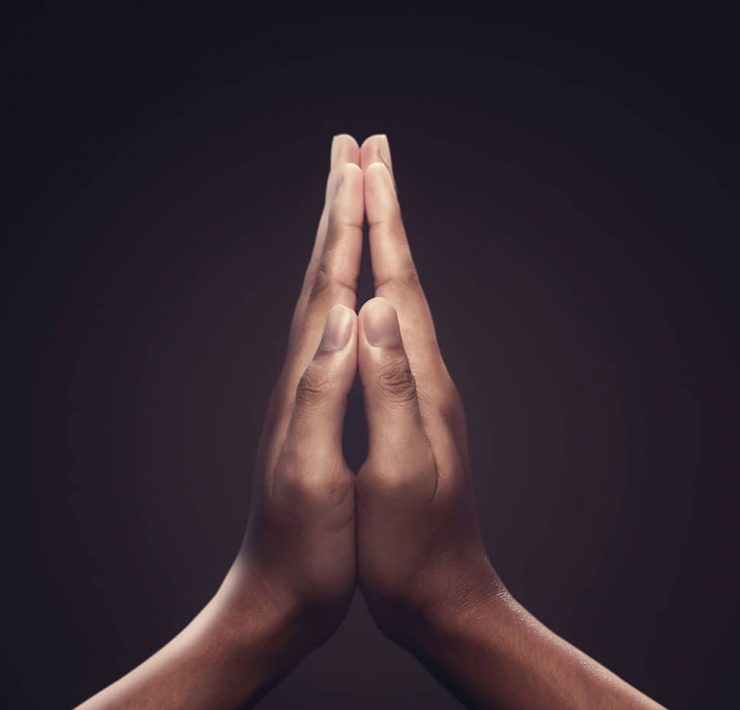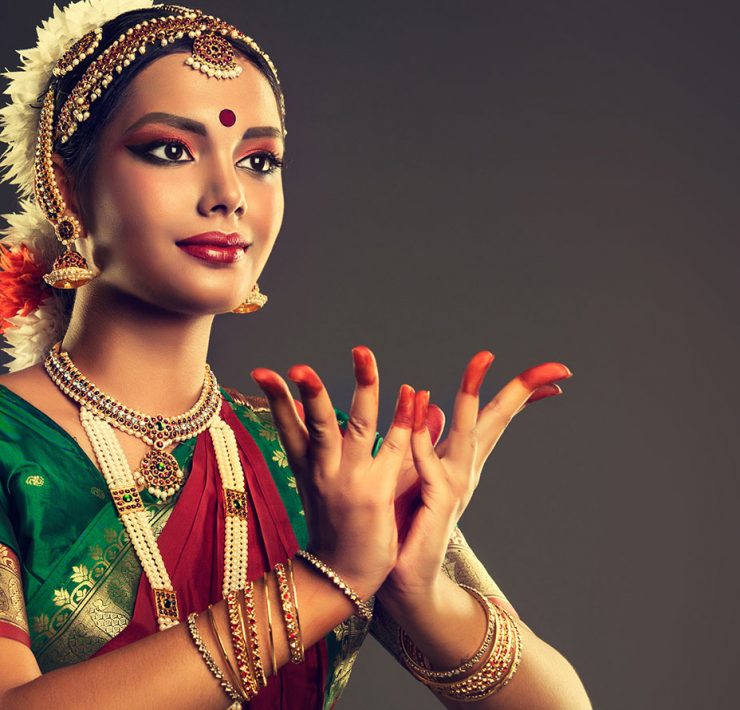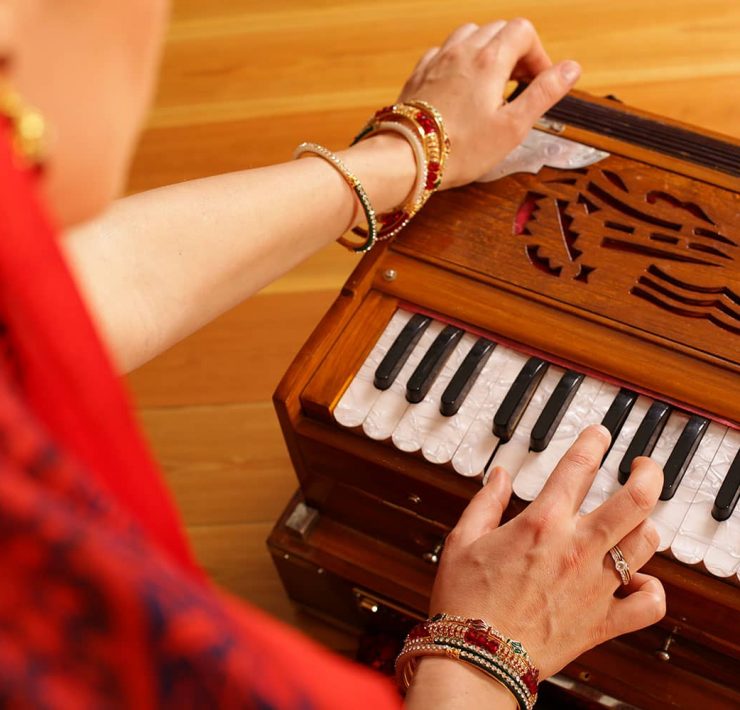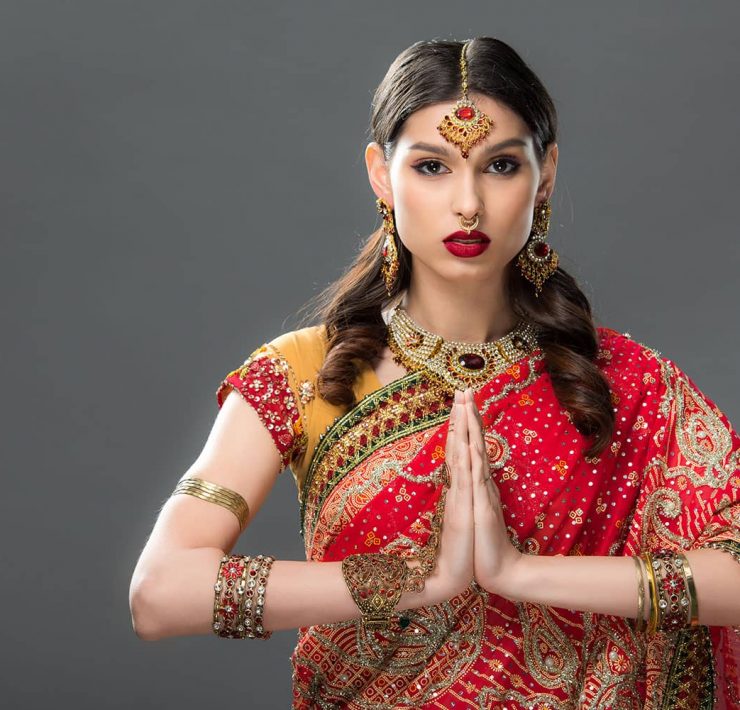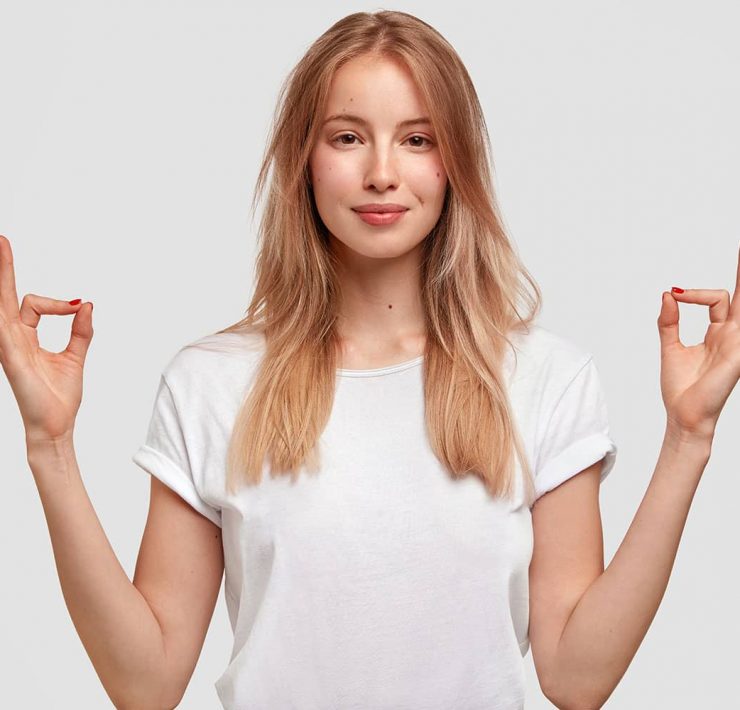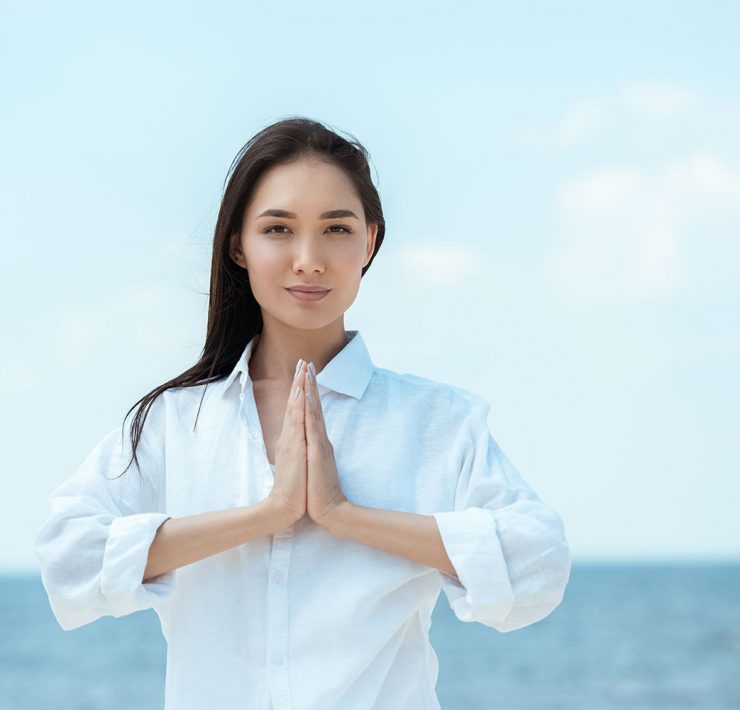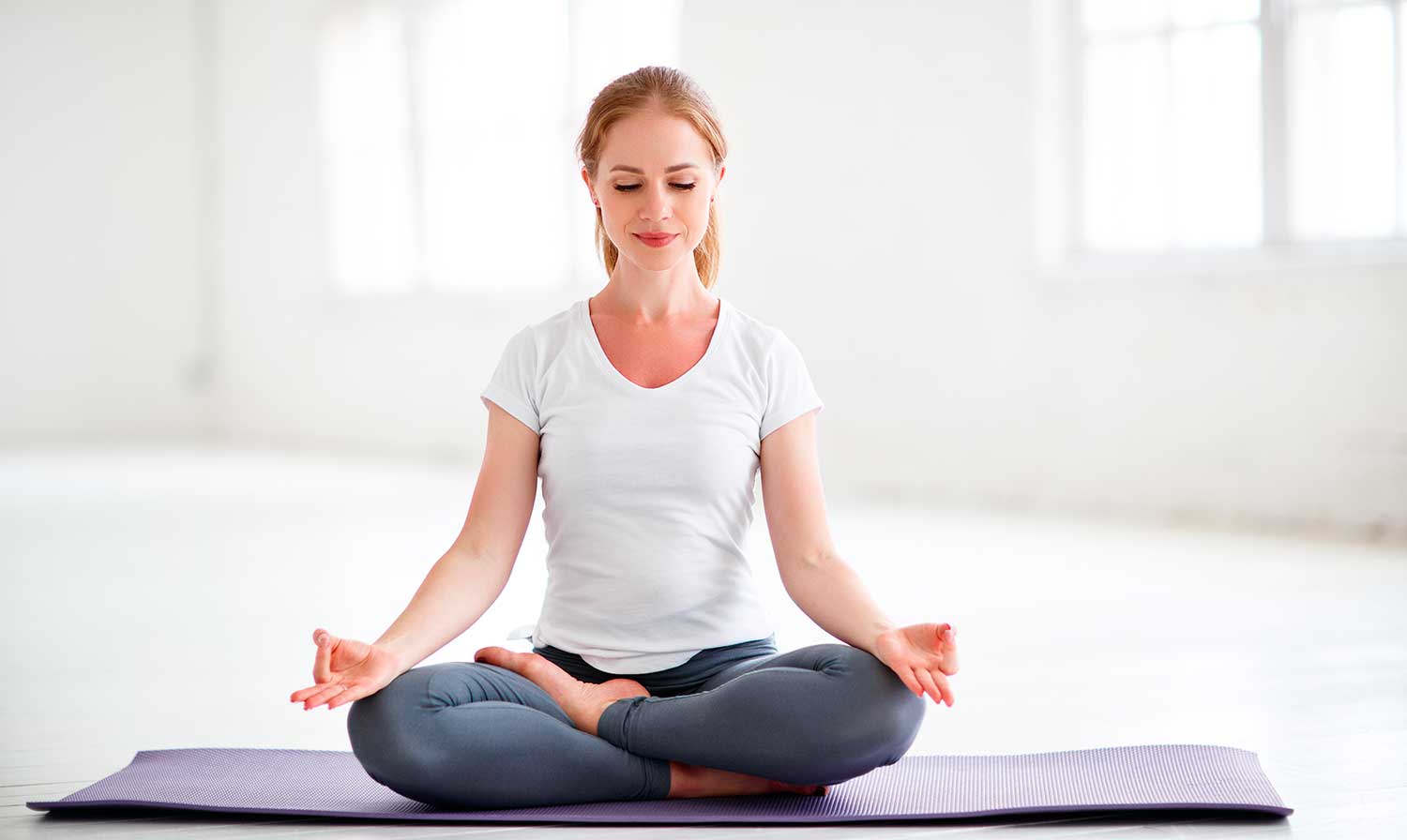
A graduate of Arizona State University, Nicole Baker is a…
Mudras are postures or gestures done with the hands; they are also referred to as seals. According to Mudra author Gertrud Hirschi in yoga, classical mudras are used for “awakening kundalini, experiencing states of expanded consciousness, or achieving enlightenment”. While the origins of mudras are unknown, they have been practiced around the world in a variety of cultures and religions. Swami Satyananda Saraswati, the yoga guru who started teaching them to the general population, advised practicing them with asana and pranayama to help intensify the practice. However, they can also be practiced as a standalone practice. Mudras can be practiced sitting, lying down, walking, standing, or with movement. For example, the Gayatri Mudra is a sequence of mudras that is practiced with the Gayatri Mantra. The gestures can also be meditative. Practicing during meditation with an intention or affirmation can help strengthen one’s resolve.
Mudras can have a wide variety of benefits such as:
Recharging low energy levels
Help practice non-attachment
Improve relationships
Increase focus and concentration
Connecting with the divine
Building inner strength and character
While mudras should never take the place of a physician or mental health professional, they have been known to help decrease stress and help in acute complaints in the body when practiced regularly.
Mudras and Breathing

Much like an asana practice and pranayama (controlled breathing), mudras can also be intensified with the breath. Before practicing mudras, it is helpful to prepare the body and the breath for practice. To start, hold the body in a symmetrical way with the hands about an inch away from the body. This helps promote balance and equilibrium. Take several strong exhales to expend any stuck energy in the body.
Depending on the mudra type, the breath may change to help promote the intention of the mudra. For example, if a mudra is meant to calm the body, the breath should become slower. If the purpose of the mudra is to increase energy, a more vigorous breath can be practiced. By learning the purpose of each mudra an appropriate breath can be practiced.
Common Mudras
There are many different mudras to practice. Here are the the the top ten mudras to get started for beginners.
Anjali Mudra

The Anjali Mudra is one of the most common energetic seals frequently practiced in yoga classes. It is often utilized at the start and end of each session sometimes with chanting or with the word Namaste. It is often paired with asanas or a series of postures such as sun salutations. In some areas of the world, it is also used as a common greeting. Alanna Kaivalya, the author of Myths of the Asana, writes that this mudra is the symbol of balance combining dualities such as the masculine and the feminine, the sun and the moon, the rational and the emotional. It allows the practitioner to bring the left and right sides together at the heart. Other benefits of Anjali mudra include stress relief, calming of the mind, and improved focus.
To Practice:
Bring the hands together with the palms touching each other near the heart.
Fingers point upward.
Buddhi Mudra

Translated from Sanskrit, buddhi means intellect or perception. This mudra promotes mental clarity and helps to receive intuitive messages from the subconscious. Physical benefits of this seal include aid in bodily issues as a result of dehydration such as indigestion, constipation, eczema, and anemia.
To Practice:
Extend the fingers on both hands.
Let the thumb and pinky fingers touch on their respective hands.
Chin Mudra

One of the most common mudras, the chin mudra is known as the gesture of knowledge and wisdom, chin mudra is frequently practiced in yoga classes and meditation. It is also known as jnana mudra. In this mudra, the thumb is symbolic of the divine while the index finger is the individual. The goal of yoga us the union of the self with the divine and this mudra helps express or seal this expression.
To Practice:
While seated, let the palms face upward with the tops of the hands resting on the thighs.
On each hand, gently let the tip of the index finger and the tip of the thumb touch.
The other remaining fingers are softly extended.
Dhyani Mudra

Commonly called the gesture of meditation, this gesture is used for contemplation. According to Hirschi, the hands make the shape of an empty bowl to show that we are “inwardly free, pure, and empty”. This mudra allows practitioners to be open to receive what the universe provides filling the empty space with new energy.
To Practice:
While sitting in a posture for meditation, place the right hand on the lap with the palm facing up.
Place the the left hand on top of the right palm, also with the palm facing up.
Let the tips of the thumbs lightly touch,
Ganesha Mudra

Ganesha is one of the most popular gods in Hin
du mythology. He is the son of Shiva, the god of war, and Parvati. His father gave him the head of an elephant after killed him for mistakenly thinking he was born out of wedlock. He is known to have great courage, intelligence, wisdom and is a remover of obstacles. Benefits of this mudra include building confidence, relieving tension, and a lifting of the spirits. Intentions practitioners may want to incorporate can include
“I am strong”, “I have confidence”, or “I have the ability to be courageous”.
To Practice:
Hold the lefthand in front of the chest with the palm facing outward, the thumb is on the bottom.
Place the right palm against the left with the fingertips facing the left elbow.
Slide the palms outward and lock the fingertips.
Repeat on the opposite side.
Kali Mudra

Name after the fierce goddess Durga, this mudra helps to build inner strength, cultivate courage, and empowers people to stand in their own truth. Durga is the Hindu goddess, described as having 8-10 arms with different weapons in each hand and rode on a red lion. Indestructible, she is known as a protector who eliminated suffering and misery.
Kali mudra represents her sword that slays illusions.
To Practice:
Sit or stand in a dignified posture.
Being the palms together and interlace the fingers
Extend the index fingers
Padma Mudra

Also known as the lotus mudra, this mudra helps calm the mind and helps overcome feelings of desire, fear, and attachment. This seal represents purity. Padma mudra works with the heart chakra which is responsible for selfless love, joy, and affection. By encouraging openness and acceptance, this gesture is ideal to practice when feeling misunderstood, fatigued, or exploited. Affirmations to cultivate may include: “I am open”, “I am loved”, or “I am blessed”.
To Practice:
Start with the hands in Anjali Mudra
Let the base of the hand and the outside of the thumbs and pinkies remain together while the other fingers open out to the sides
Like a lotus flower that blooms, this mudra can be practiced in stillness but can also incorporate movement. Like a blooming flower, simply start in Anjali Mudra and with the breath alternate between the two. Letting the fingers slowly open and close with the breath.
Prana Mudra

Prana translates to life force. Our life force is contained within the breath. Without prana, there is no life. Prana mudra helps energize the life force and increase focus. According to Girsch, this seal helps activate the root chakra. The root chakra is the energetic center of the body responsible for vitality, security, and confidence.
From a physical perspective, the prana mudra helps reduce anxiety and fatigue while improving vision and increasing vitality. Suggested practice time for this mudra is between five and 30 minutes.
To Practice:
Extend the finders on each hand with the palms facing up.
Let the tips of the thumb, ring finger, and pink touch on their respective hands.
Surya Mudra

Surya Mudra
Also called the mudra of the sun, this mudra builds heat and helps control weight and obesity. Additional benefits of Surya Mudra include improved vision, increasing heat in the body, and promoting weight loss. Recommended length of time to practice is thirty minutes per day. This mudra should be avoided if one is fatigued to tired.
To Practice:
On each hand bend each ring finger so it reaches the base of the thumb.
Gently apply pressure from the thumb to the index finger above the knuckle
Keep the other fingers extended
Vajrapradama Mudra

In English, this gesture translates to the unshakeable trust seal. This mudra helps increase confidence, inner strength, and trust. This mudra is useful to add with a mantra. If someone is feeling insecure or indecisive about a decision, pairing this with an affirmation such as “I am capable” or “I have the ability” can help intensify this lock.
To Practice:
With both palms facing the chest, interlace the fingers.
Let the thumbs point upward
Draw the elbows towards the sides
Conclusion
Mudras can help promote better health and wellbeing. By pairing mudras with an asana, meditation, or pranayama practice the benefits can be greatly intensified.
What's Your Reaction?
A graduate of Arizona State University, Nicole Baker is a force to be reckoned with in the realm of health and wellness. She studied behavioral health, which propelled her desire to live holistically and share her knowledge with other like-minded individuals.






